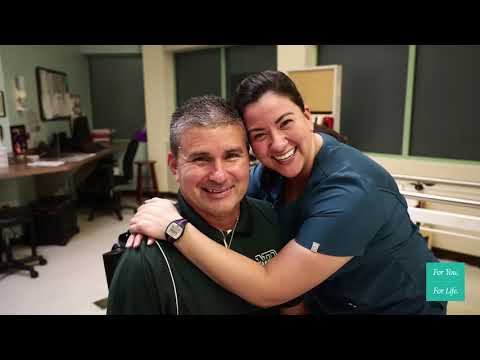Which is Better for You – Medical Assistant or Phlebotomy?
Contents
- Considering a career in the medical field?
- Not sure which route to take?
- Considering becoming a medical assistant or phlebotomy?
- Here’s a side-by-side comparison of the two professions.
- Weighing the pros and cons of each career.
- What’s the job outlook for medical assistants and phlebotomists?
- How much can you expect to earn in each profession?
- What are the educational requirements for each profession?
- What are the day-to-day duties of medical assistants and phlebotomists?
- Ready to make a decision?
Considering a career in the medical field but not sure which route to take? Check out this blog post to see a comparison of medical assistant and phlebotomy careers!
Checkout this video:
Considering a career in the medical field?
There are many different medical careers to choose from, and it can be difficult to decide which one is right for you. If you’re interested in working directly with patients, you might be wondering whether you should become a medical assistant or phlebotomist. Both of these roles are important in healthcare, but they are quite different. Here’s a look at the key differences between these two careers:
Medical assistants usually work in doctors’ offices, clinics, or hospitals. They perform tasks such as taking patients’ vital signs, scheduling appointments, and assisting with exams and procedures. They also may be responsible for handling medical records and billing.
Phlebotomists draw blood from patients for various purposes, such as laboratory testing or blood transfusions. They must be skilled in vein selection and blood collection techniques. Phlebotomists typically work in hospitals, blood banks, or diagnostic laboratories.
So, which career is right for you? If you want to work directly with patients and have a wide range of responsibilities, becoming a medical assistant might be the better choice. If you’re interested in a more specialized role that focuses on blood collection, then phlebotomy might be a better fit.
Not sure which route to take?
You’ve decided that you want to join the allied health field, but you’re not sure which route to take. You’re interested in both medical assisting and phlebotomy, but you don’t know which one is right for you. Here is a comparison of the two career paths to help you make your decision.
Medical assistants perform both clinical and administrative tasks in doctors’ offices, hospitals, clinics, and other healthcare facilities. They are usually the first point of contact between patients and the rest of the healthcare team. Clinical duties may include taking and recording patient vital signs, preparing patients for examination, assisting the physician during the exam, scheduling appointments, and handling laboratory specimens. Administrative duties may include answering phones, greeting patients, updating Medical records billing insurance companies, and coding medical documents. Most Medical assistants have completed a postsecondary education program accredited by the Commission on Accreditation of Allied Health Education Programs (CAAHEP) or the Accrediting Bureau of Health Education Schools (ABHES).
Phlebotomists are responsible for collecting blood samples from patients for laboratory testing. They work in hospitals, clinics, blood banks, and other healthcare facilities. Phlebotomists must be skilled in venipuncture – the process of making an incision in a vein to draw blood – as well as capillary puncture – the process of puncturing a finger or heel to obtain a small blood sample. They must also be able to properly handle and process specimens and follow all safety protocol regarding blood-borne pathogens. Phlebotomists usually have completed a postsecondary education program accredited by CAAHEP or ABHES. Some states require phlebotomists to be certified by a professional organization such as the National Healthcareer Association or American Medical Technologists.
Considering becoming a medical assistant or phlebotomy?
If you’re interested in a career in the medical field, you may be wondering if you should become a medical assistant or phlebotomy. Both roles are important in the medical industry, but they have different duties. As you’re considering your options, it’s important to understand the difference between these two roles.
Medical assistants are responsible for a variety of administrative and clinical tasks in a medical office. They may schedule appointments, help with billing and insurance, and maintain patient records. Medical assistants may also take vital signs, give injections, and perform basic laboratory tests.
Phlebotomy is the process of drawing blood from a patient for laboratory testing. Phlebotomists are trained to effectively and efficiently draw blood from patients of all ages. They must have excellent communication skills to put patients at ease and must be able to answer any questions that patients may have about the procedure.
While both roles are important in the medical industry, they have different duties. If you’re interested in a career in the medical field, you should consider becoming a medical assistant or phlebotomy.
Here’s a side-by-side comparison of the two professions.
Phlebotomy is the practice of drawing blood from patients for medical purposes. Medical assistants, on the other hand, provide basic clinical and administrative support to doctors and nurses in a variety of settings.
So, which one is better for you? Here’s a side-by-side comparison of the two professions:
– Phlebotomy requires specialized training and certification, whereas medical assisting does not.
– Phlebotomists typically work in hospitals or clinics, whereas medical assistants may work in a variety of settings, including doctor’s offices, nursing homes and even schools.
– Phlebotomists typically work regular weekday hours, whereas medical assistants may work evenings or weekends depending on their place of employment.
– Phlebotomists are responsible for drawing blood from patients, while medical assistants have a more general set of responsibilities that may include taking patient vital signs, administering medication, and scheduling appointments.
Weighing the pros and cons of each career.
Both medical assistants and phlebotomists play important roles in the healthcare industry. But which one is the better career choice for you? Let’s take a look at some of the pros and cons of each profession to help you make your decision.
Medical Assistants
Pros:
-1. Medical assistants are in high demand. The demand for medical assistants is expected to grow by 23% from 2016 to 2026, according to the Bureau of Labor Statistics.
-2. Medical assistants are versatile. They can perform a variety of tasks, such as taking medical histories and administering shots.
-3. Medical assistants can work in a variety of settings. They could work in a doctor’s office, clinic, or hospital.
Cons:
-1. Medical assistants may have to work evenings or weekends.
-2. Medical assistants may have to deal with sick patients.
-3. The job of a medical assistant can be stressful at times.
Phlebotomists
Pros:
-1. Phlebotomists are in high demand. The demand for phlebotomists is expected to grow by 25% from 2016 to 2026, according to the Bureau of Labor Statistics.
-2. Phlebotomists can work in a variety of settings.”Phlebotomists could work in doctor’s offices, clinics, hospitals, or blood banks”
-3.”The job of a phlebotomist is generally less stressful than the job of a medical assistant”
Cons:
-1.”Phlebotomists may have to work evenings or weekends”
-2.”Phlebotomists may have to deal with sick patients”
What’s the job outlook for medical assistants and phlebotomists?
Job outlook for medical assistants is positive. According to the U.S. Bureau of Labor Statistics, employment of medical assistants is expected to grow 29 percent from 2019 to 2029, much faster than the average for all occupations. The demand for healthcare services is expected to increase as the population ages, and medical assistants will be needed to perform routine administrative and clinical tasks to keep doctors’ and other healthcare practitioners’ offices running smoothly.
For phlebotomists, the job outlook is also positive. According to the U.S. Bureau of Labor Statistics, employment of phlebotomists is expected to grow 11 percent from 2019 to 2029, faster than the average for all occupations. The demand for phlebotomy services is expected to increase as the population ages and the need for blood tests grows.
How much can you expect to earn in each profession?
There is a significant difference in wages between medical assistants and phlebotomists. Medical assistants earn a median wage of $33,610 per year, while phlebotomists earn a median wage of $29,730 per year. However, phlebotomists may have opportunities for overtime pay and bonuses that can increase their earnings.
What are the educational requirements for each profession?
Medical assistants and phlebotomists are both important members of the healthcare team. They both work closely with patients and provide vital services to hospitals and clinics. But what are the differences between these two roles? And which is better for you?
The first difference is in the educational requirements. A medical assistant need only have a high school diploma or equivalent, although some employers may prefer candidates with some postsecondary education. Phlebotomists, on the other hand, must have completed an accredited phlebotomy training program.
Medical assistants can find work in a variety of settings, including hospitals, clinics, doctor’s offices, and even insurance companies. Phlebotomists are generally more limited in their career choices, as they usually work in hospitals or blood donation centers.
Medical assistants typically have more responsibilities than phlebotomists. In addition to drawing blood, they may also be responsible for scheduling appointments, taking medical histories, measuring vital signs, and assisting physicians with exams and procedures. Phlebotomists generally only have responsibility for drawing blood.
So which is better for you – medical assistant or phlebotomy? The answer depends on your individual circumstances. If you’re looking for a challenging role with more responsibility, then medical assisting may be the better choice. If you’re looking for a role that doesn’t require as much training and offers more flexible hours, then phlebotomy may be the better option.
What are the day-to-day duties of medical assistants and phlebotomists?
Both medical assistants and phlebotomists have important roles to play in healthcare settings, but their day-to-day duties are quite different. Medical assistants typically work in an administrative capacity, while phlebotomists are responsible for drawing blood from patients.
Medical assistants typically perform a wide variety of tasks, from scheduling appointments and maintaining medical records to taking patient histories and preparing them for examination. They may also be responsible for basic laboratory tasks, such as performing urine tests. In some states, medical assistants may even be allowed to administer vaccinations.
Phlebotomists, on the other hand, are responsible solely for drawing blood from patients. They must be skilled in both venipuncture (drawing blood from a vein) and dermal puncture (drawing blood from an artery or capillary). Phlebotomists must also be knowledgeable about the different types of blood collection tubes and how to properly label them. In some cases, phlebotomists may also be responsible for processing and storing blood samples.
Ready to make a decision?
If you’re new to the field of healthcare, or you’re considering a career change, you may be wondering what the best healthcare job is for you. With so many options available, it can be tough to narrow down your choices. Two popular healthcare jobs are medical assistants and phlebotomists. So, which is better for you – medical assistant or phlebotomy?
Both medical assistants and phlebotomists are in high demand. They are both responsible for important tasks that keep the medical facility running smoothly. However, there are some differences between the two positions.
Medical assistants generally have more responsibilities than phlebotomists. They may be responsible for scheduling appointments, taking patient medical histories, and providing basic patient care. Medical assistants may also be responsible for administrative tasks, such as billing and coding. In some cases, medical assistants may also be responsible for assisting the physician with basic tasks, such as exams and minor surgeries.
Phlebotomists have one primary responsibility – drawing blood from patients. They generally work in hospitals or clinics, and they may also work in blood donation centers. Phlebotomists must have excellent attention to detail and strong hand-eye coordination. They must also be able to handle blood without becoming queasy.
Both medical assistant and phlebotomy positions require at least a high school diploma or equivalent. Medical assistants may also be required to complete a formal training program or earn certification from an accredited organization, such as the American Association of Medical Assistants or the National Healthcare Association. Phlebotomists are generally required to complete a formal training program and earn certification from an accredited organization, such as the National Healthcare Association or the National Phlebotomy Association.
So, which is better for you – medical assistant or phlebotomy? The answer depends on your individual skillset and interests. If you enjoy working with patients and performing administrative tasks, then medical assisting may be a good fit for you. If you have good hand-eye coordination and enjoy working with blood samples, then phlebotomy might be the right career choice for you.







